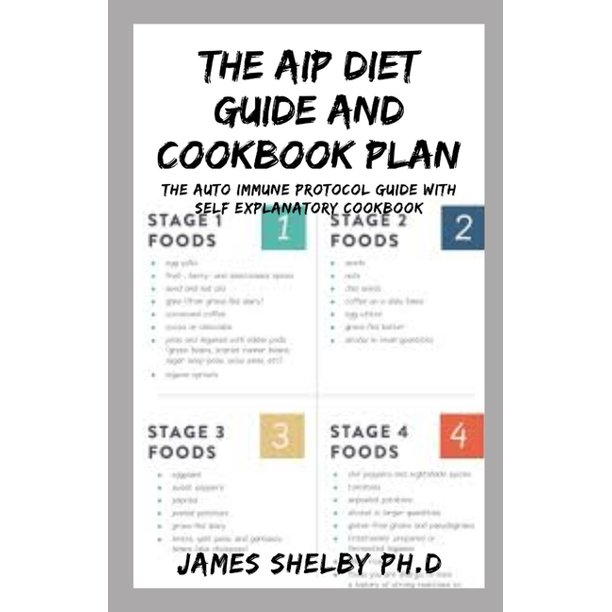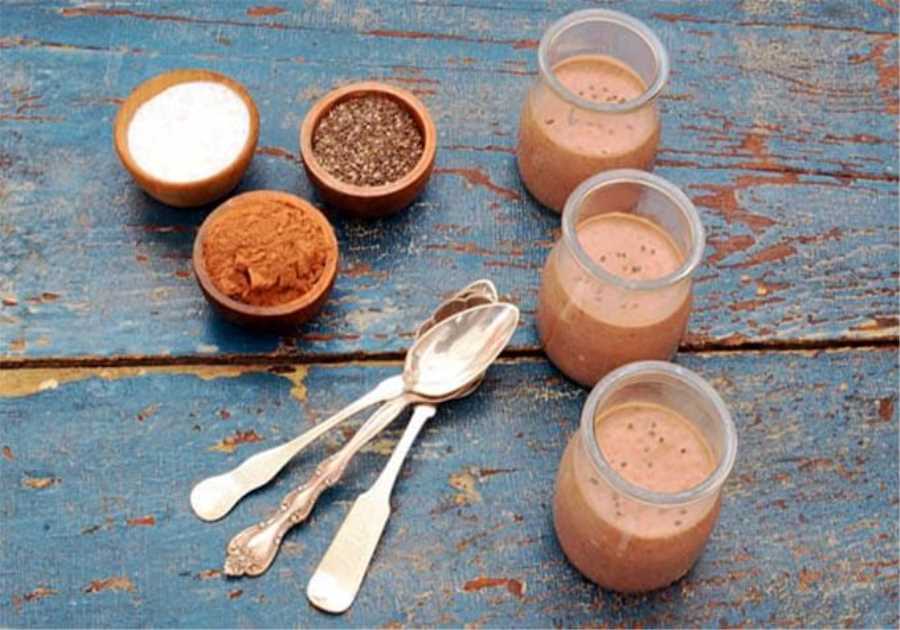
The AIP diet has several health benefits. Besides reducing inflammation and weight, this diet also provides essential nutrients. These include zinc, choline, and various B vitamins. These nutrients modulate the immune response and help repair damaged tissues. The benefits of eating liver are particularly high on the AIP diet. The nutrients would otherwise be found in other foods, such as eggs.
What is the AIP Diet?
The Autoimmune Protocol diet, or AIP diet, is an anti-inflammatory dietary protocol designed to reduce inflammation, pain, and other symptoms caused by autoimmune disease. The AIP diet eliminates potentially problematic foods that can trigger unwanted symptoms and replace them with nutrient-dense whole-food items that are less likely to cause inflammation.
What are the Benefits of the AIP Diet?
Due to its focus on nutrient-rich whole foods and the elimination of potential irritants, the AIP diet has many benefits. It helps people with autoimmune diseases manage their symptoms by reducing inflammation and improving overall health. It may help improve mood and energy levels and support weight loss. Additionally, it offers a greater variety of food choices than traditional autoimmune diets, making adherence easier for some people.
What are the Potential Downsides of the AIP Diet?
The major downside of the AIP diet is its restriction on certain foods that can be beneficial in moderation (e.g., legumes). Additionally, it can be challenging to adhere to long-term due to limited food choices and stricter guidelines than other diets. Frequent meals filled with nutrient-rich foods can also require more grocery shopping and meal preparation time than other diets. People should talk to their doctor before starting any restrictive eating plan like the AIP diet.
Reintroduction
Reintroducing certain foods into the AIP diet can be tricky. Many people on a diet fear reintroducing these foods will cause a flare-up. But the trick is to be systematic and gradual. In addition to removing offending foods from the diet, you should focus on removing emotions such as regret, guilt, and anger. These emotions can inhibit the healing process.
Dr. Sarah Ballantyne developed the AIP diet. It is based on foods' nutrient content and the likelihood of triggering an adverse reaction. Therefore, you should start by reintroducing foods that are easier to tolerate and more nutritionally dense. The reintroduction phase can be a fascinating and eye-opening experience.
Phases
The Autoimmune Protocol (AIP) diet is a series of lifestyle and food changes that promote optimum health. It is designed for people with autoimmune diseases. It is estimated that one in five people in the United States has an autoimmune disease. The dietary guidelines and philosophies of the Autoimmune Protocol are intended to help people heal their bodies from autoimmune diseases and to regain a healthy life.
The AIP diet is designed to help those with autoimmune diseases reverse their condition by reducing their intake of certain foods. It is recommended that people on the AIP diet follow the diet for at least 30 days. It is also advisable to join an AIP support group online or in person. It can help you cope with the diet and share tips for tough days. In addition, the advice of a health professional can be invaluable.
Nutrition
The AIP diet focuses on eliminating preservatives and inflammatory foods. However, it allows all fruits and vegetables in moderation. In addition, the AIP diet allows most herbs and spices. Most importantly, it does not allow grains or industrial foods that contain preservatives and additives. The diet also doesn't allow alcohol.
The AIP diet focuses on foods that promote healthy gut flora and reduce inflammation in the intestines. This is important because the gut is the center of the immune system, and proper gut balance may help the immune system regulate itself. This is important because autoimmune diseases develop when the immune system cannot distinguish healthy cells from harmful ones.
The AIP diet nutrition guide helps you identify your food sensitivities and avoid the foods that contribute to those sensitivities. It doesn't require you to cut out everything from your diet, but it does require you to make smarter choices. For example, you might want to avoid dairy as it affects your sleep. While you're following the diet, you should make sure to keep a food journal. This journal will become your lifelong guide.
Health benefits
One of the AIP diet's best benefits is that it allows people to understand better their bodies and what foods cause them to experience symptoms. While the diet can be challenging to follow at first, it also allows people to understand their food sensitivities and develop a menu plan that is healthy for them.
The AIP diet includes two phases: the elimination phase and the reintroduction phase. You must avoid certain foods during the elimination phase to cleanse your body and heal the gut. You will then reintroduce these foods one by one for a specified period. You must maintain a food diary to track your progress as you return to eating healthy foods.
The AIP diet is known to be beneficial for individuals with autoimmune diseases. However, it can also benefit anyone with a chronic inflammatory condition. Patients with SIBO, allergies, eczema, and hypothyroidism may also benefit from the diet. Because of its emphasis on eliminating inflammatory foods, the AIP diet can help patients manage their symptoms while at the same time improving overall health.
Challenges
The AIP diet can be difficult for some people. In addition to requiring frequent small meals, the diet may make it difficult to meet daily nutritional needs. This can lead to nutrient deficiencies and poor health over time. You should consult a registered dietitian for support if you are experiencing any of these challenges.
The AIP diet can be time-consuming. However, it can help manage certain health conditions and busy schedules. It is helpful to plan your meals ahead of time, making it easier to stick to your diet. You can use an AIP meal delivery service if you cannot prepare meals at home. Many of these services offer meal packaging that makes them convenient to bring.
The AIP diet allows you to discover what triggers your body to react to certain foods. Then, you can gradually add foods back into your diet. The idea is to see how your body reacts to new things so that you can learn which ones will improve your health.
Frequently Asked Questions
What foods should I eat in order to lose weight fast while doing intermittent fasting
Strategistically thinking is essential to creating a diet that works. It is essential to ensure that the type and amount of food you consume are compatible with your fitness goals. You should avoid overeating and overindulging on processed foods.
Proteins are the key to successful intermittent fasting weight loss. Lean proteins such as chicken, salmon or ground turkey are rich in muscle-burning amino acid and plenty of filling fiber. Protein will make you feel fuller, and help with your feelings of satisfaction. Next, high-fiber vegetables such as leafy greens or cruciferous vegetables will not only fill you up, but also provide essential vitamins and minerals like magnesium, vitamins K and vitamins C and, beta carotene and potassium, which fuel your cells. Complex carbs like rice and oats can help you feel less overwhelmed after a meal.
Remember to consume healthy fats in moderation. High-nutrient seeds such as sunflower seeds and Chia seeds are rich in MUFA & PUF (Monounsaturated and Polyunsaturated essential fatty acids). These nutrients are great for overall health, wellness, and hair and skin health. Brocolli is a nutrient-dense vegetable that contains many micronutrients, including calcium, magnesium and iron. It can be used to combine all of these macronutrients in one meal.
This allows you to easily make a keto diet plan, which will curb your hunger cravings and not compromise your nutritional needs.
How much weight can you lose with intermittent fasting in a single week?
Is it possible to calculate how much weight you should try to lose each week by doing an intermittent fast? This requires thoughtful reflection.
The key is to be balanced. Too aggressive goals can cause burnout and injury. Consider lifestyle factors like adequate sleep, hydration, and nutrition when planning your weight loss goals. While counting calories may be an effective tool, it should not be your only focus.
Be aware of the realistic results. Losing more weight than 1-2 kilograms per day can cause strain on the body. However, trying to lose less weight could have minimal to no visible results. The body can also be measured to monitor progress, in addition to simply looking at the scales.
Finally, it is a good idea to speak with a dietitian/health professional who can offer support and guidance throughout your journey. To ensure your goal is safe, achievable, and sustainable, it's a good idea to get an objective opinion.
What are the rules for intermittent fasting?
It takes some knowledge of the rules and regulations to unravel the secrets of intermittent fasting. This dietary practice focuses on limiting your caloric intake or meals to specific days or hours rather than daily.
Intermittent fasting is essentially a way to avoid eating for long periods. Then, you will have periods where you eat and then periods when your body stops eating. This may simply mean that you restrict calories and eat fewer calories on certain days or times. Intermittent fasting is a good choice for improving your mental and physical health. It can lead to increased energy levels, focus and concentration, less inflammation, lower blood sugar levels as well as balanced bloodlipids and lucid dreaming.
Fasting is not something to do blindly. It is important that you have the right guidelines before you embark on this journey. Although these rules can vary depending on how the person chooses to fast, here are some guidelines: Pick a time period for your meals; pick foods that have low glycemicindex; eat only when you feel hungry; eat before you eat and exercise after you eat; alternate between fasting from one week to several.
These tips will help to ensure that you have a successful experience with intermittent fasting.
How can you do intermittent fasting with beginners?
It can seem difficult to start intermittent fasting. However, it is possible to get started with intermittent fasting by understanding the basics and taking the right steps.
First, you need to decide what type of fasting is best for you. There are three main types: the time-restricted diet, the 16/8 method and the 5/2 diet. Time-restricted eating means that you eat only during certain hours of the day. The 16/8 method, on the other hand, requires that you eat within an 8-hour time frame and then skip the meals for the remainder of the day. The 5:2 diet is a non-consecutive week of calorie restriction, with normal eating the rest of the time.
Secondly, set yourself up for success by stocking up on nourishing foods that are easy to make and convenient to eat when hunger strikes. This includes high-nutrient foods like eggs, beans and pulses; healthy oils from nuts, seeds, or olive oil; high fibre carbohydrates like quinoa; and fresh fruits and vegetables that provide your daily dose of vitamins.
You should also plan how you will deal with social pressure while dining out with family and friends. This is especially important for those who live a fast, intermittent lifestyle. Flexibility is also important in staying focused on your goals, so try to incorporate sweet spot meals that offer increased satisfaction while restrictive enough not to undo the progress made over the last few weeks or months.
To maintain motivation, it is important to keep track of results.
Statistics
- IF participants) IF resulted in weight loss, ranging from 0.8% to 13.0% of baseline body weight (Table 1). (ncbi.nlm.nih.gov)
- IF trials found weight loss of 0.8% to 13.0% of baseline weight with no serious adverse events. (ncbi.nlm.nih.gov)
- Fat consumption was examined in 1 study, which compared dietary fat intake of 45% versus 25% at the expense of carbohydrate intake. (ncbi.nlm.nih.gov)
- The rigor of fasting also varied, with several studies allowing 25% of regular caloric consumption during fasting periods. (ncbi.nlm.nih.gov)
External Links
ncbi.nlm.nih.gov
- Intermittent energy restriction helps obese men lose weight: the MATADOR research - PubMed
- INTERMITTENT FASTERING AND HUMAN METABOLIC HEALTH. PMC
academic.oup.com
- Nutrition Reviews
- Effect of an Intermittent Calorie-restricted Diet on Type 2 Diabetes Remission: A Randomized Controlled Trial
pubmed.ncbi.nlm.nih.gov
- Intermittent fasting: is there a role in the treatment of diabetes? A review of the literature and guide for primary care physicians - PubMed
- Daily Fasting Improves Survival and Health in Male Mice Independently of Diet Composition - PubMed
nejm.org
How To
Tips and tricks for sticking to an Intermittent Fasting Plan
Intermittent eating is a popular method for weight loss. While intermittent fasting can improve your health and help you reach your goals, sticking to a consistent schedule can be challenging. Here are some tricks and tips to help ensure you stay on track.
-
Choose a routine you like: Everybody is different so it's important you find one that works. Some prefer to eat early and fast overnight. Others prefer to be awake and eat in the morning. Test different ways to find out what works for each of you.
-
Healthy snacks are important: If you are fasting for a long time, it is essential to keep your body nourished. Healthy snacks such as fruits, nuts, seeds or fruit can help you keep your energy up, and your hunger under control.
-
Plan: Planning can help make sticking to your intermittent fasting schedule easier. To help you stay on track, prepare your meals ahead of time or pack healthy snacks for work and other activities.
-
Stay hydrated. Water is a great way to keep full and satisfied, even while fasting. Get at least 8-10 glasses of water each day. Consider adding herbal teas or unsweetened coffee to increase your intake.
-
Flexibility is a virtue: You can be flexible with your intermittent fasting program. Life happens and you might need to change your routine from time to time. Don't worry if something goes wrong.
Sticking to an intermittent fasting schedule can take some practice and dedication. It is possible to make intermittent fasting a regular part of your healthy lifestyle with the right mindset. With some trial and error, you can find a routine that works for you and helps you reach your health goals.
Did you miss our previous article...
https://paleovsketo.com/intermittent-fasting/how-much-cholesterol-in-a-day






